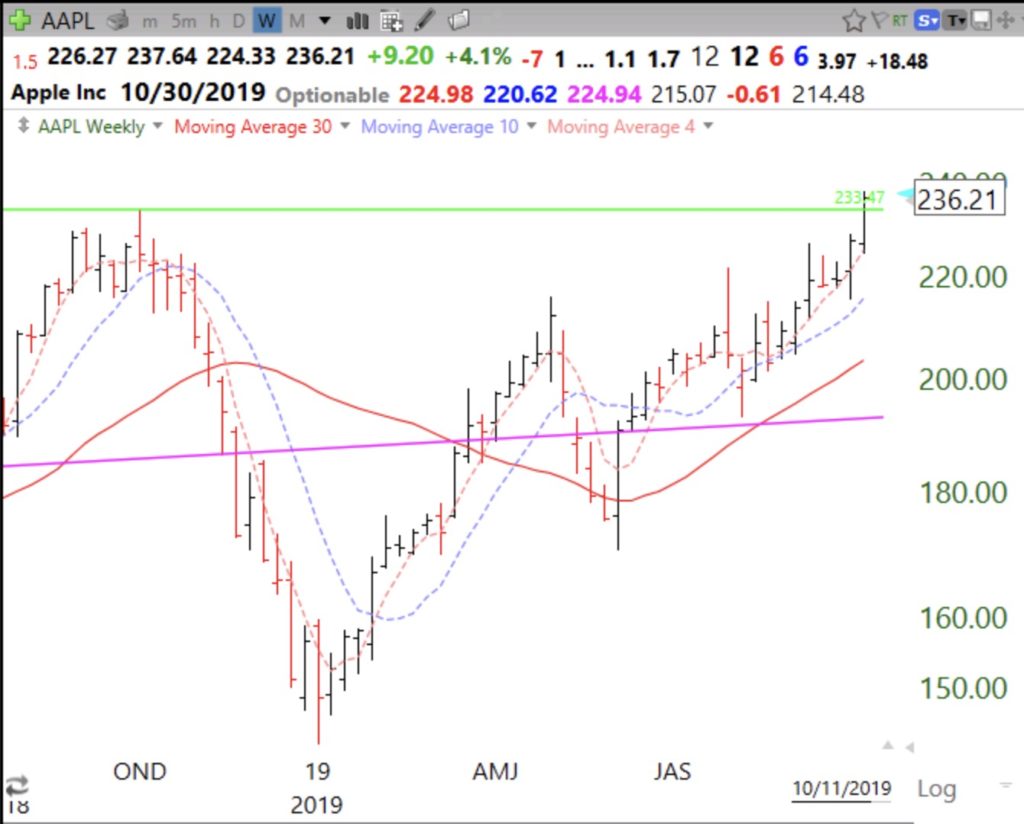QQQ remains in a Weinstein Stage II up-trend, above its rising 30 week average (solid red line).
AAPL has green line break-out (GLB) to an ATH (all-time high).
GMI rises to 3 (of 6) and QQQ short term down-trend may end Monday.
Stock Market Technical Indicators & Analysis
QQQ remains in a Weinstein Stage II up-trend, above its rising 30 week average (solid red line).
AAPL has green line break-out (GLB) to an ATH (all-time high).
GMI rises to 3 (of 6) and QQQ short term down-trend may end Monday.
I have seen a lot of markets fall in October and sometimes form major bottoms. The current market has been extremely difficult to trade with all of its gyrations. I am almost totally in cash in my trading accounts. The GMI signal could turn Red with a few weak days next week. My short term trend for the QQQ might turn down Monday. The QQQ is weaker than the SPY and DIA and is now below its critical 10 week average. This is the time to be on the sidelines and to wait for a definitive trend to develop.